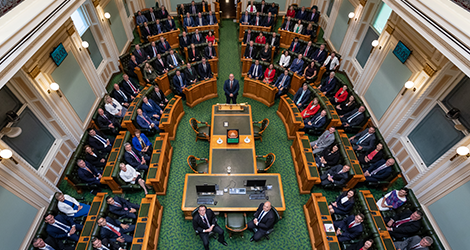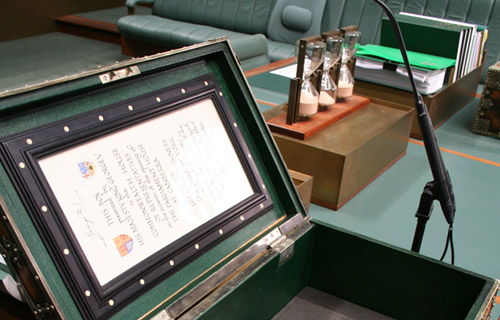If you’ve tried to get an appointment to see a GP or specialist recently, you will likely have felt the impact of Australia’s doctor shortages .
Authors
- Lisa Nissen
HERA Program Director – Health Workforce Optimisation Centre for the Business & Economics of Health, The University of Queensland
- Lynda Cardiff
Senior Research Fellow, Centre for the Business and Economics of Health, The University of Queensland
To alleviate workforce shortages, the Queensland government is considering introducing health workers called physician assistants more widely to the state’s health system.
But the medical body representing physicians, the Royal Australasian College of Physicians, has warned thorough consultation with medical experts is needed first.
So what exactly are physician assistants? And are they the solution to our workforce issues we’ve been looking for? Let’s look at what the evidence says – and the lessons from abroad.
What is a physician assistant?
Physician assistants, also known as physician associates, are trained health professionals who work under the supervision of a doctor. They undertake a variety of tasks including :
- examining patients
- ordering and interpreting blood tests
- assisting in surgery
- prescribing medicines.
In general practice, physician assistants may also provide preventative health care such as giving vaccinations and providing health advice.
Physician assistants commonly complete postgraduate-level university education and a hands-on training program. They may also need to have completed a health-based undergraduate degree.
In most countries, physician assistants work under a “delegation” model. This means the treating doctor and physician assistant together determine the tasks the physician assistant can undertake, depending on their competence. As their skills and knowledge increase, the level of supervision changes accordingly.
When were they first used?
Similar roles have been used throughout history, including in the military. As early as the 1800s, trained assistants known as feldshers (or feldschers) provided basic medical care during times of war, for example in Russia , Bulgaria and Poland .
The contemporary physician assistant role evolved in the 1960s in the United States. It was initially designed to use the skills of medically trained military servicemen .
Since then, it has become an accepted and well established part of the health care team in the US, where the medical profession supports the physician assistant role and contributes to its regulation.
There are currently more than 178,000 physician assistants practising in the US, across a wide range of settings. Around one-quarter work in family/general medicine and one-fifth in rural and medically under-served areas.
Physician assistants can be found in many countries, including Canada, New Zealand, the United Kingdom, Germany and the Netherlands.
Australia previously trialled physician assistant in two states, Queensland and South Australia . Like other countries, the role was found to be effective and acceptable.
What does the research say about their use?
Most research about physician assistants originates from the US. Studies spanning several decades show physician assistants provide safe and appropriate care. They can competently undertake consultations , perform complex procedures , provide preventative health care , treat non-complex patients in the emergency department and provide a wide range of services in rural areas .
Most studies have reported patient satisfaction with the physician assistant role.
Research has found it’s cost-effective to use physician assistants, including for complex patients.
Physician assistants can improve the continuity of patient care in hospitals, as they remain with their supervising doctor rather than moving between hospital areas as trainee doctors do. This enables them to maintain consistent contact with patients, their families and other members of the health-care team.
Using physician assistants in emergency departments enables doctors to review more complex patients .
In surgery , physician assistants can reduce the workload on resident doctors. They can prepare patients for surgery, review them afterwards and perform some surgical procedures. They can also reduce the time patients stay in hospital.
Physician assistants can also provide care in rural and remote areas and have worked with Aboriginal health workers in remote areas of Australia.
What do Australian policymakers need to consider?
Like many other countries, the Australian health workforce is under pressure. Recent reviews have highlighted the need to examine how the health system and workforce can more effectively meet the needs of the community. This includes making better use of all current health professions by enabling them to perform the tasks they have been trained to do.
Health professionals must ensure their care keeps patients safe and aligns with public expectations. This relies on appropriate education and training, funding and payment policies, governance and regulation. Effective regulation ensures health professionals are held accountable for their practice, according to defined professional practice expectations.
Despite physician assistants being trialled in Queensland and SA, the role did not gain the support of the medical profession. As a result, only a small number of physician assistants are currently practising. And Australia no longer provides education programs for physician assistants.
Several factors affected the acceptance of the physician assistant role.
Their skills and competence weren’t widely understood or recognised. This meant their scope of practice was poorly defined, which may have been confusing for both patients and health professionals.
The profession was also unable to access Medicare rebates or Pharmaceutical Benefits Scheme subsidies for patient consultations or scripts. This limited their full involvement in some health services such as general practice.
What could we do better?
Australia needs to learn from the available evidence when considering a possible role for physician assistants.
In the US and Canada, for example, a close relationship between the medical and physician assistant professions has provided guidance and support for the role, and ensured physician assistants are accountable for their practice, through the development of “expected standards” of practice.
As demand for health services increases, it makes sense to explore the addition of physician assistants to Australia’s health-care workforce, if safety and quality can be assured, and health care teams function optimally.
![]()






